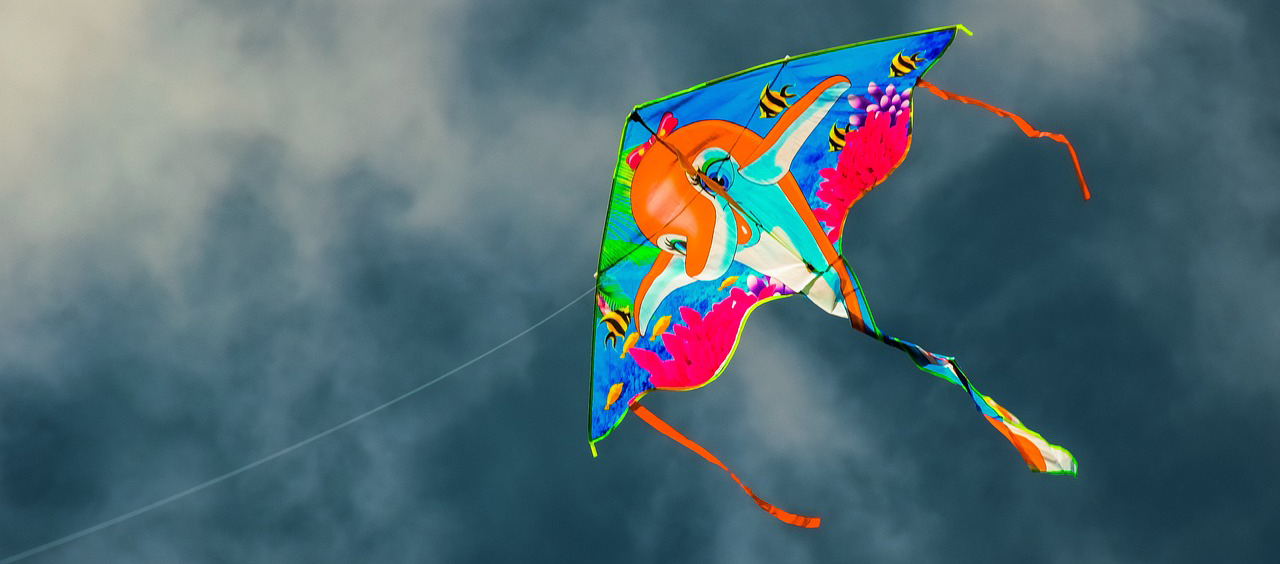Human civilization has included kite-flying for thousands of years. Around 2,800 years ago, the Chinese invented kites for military signaling and religious rites. Kite-flying in Asian traditions symbolizes luck and wealth. Kites are flown at Japanese festivities to fend off evil and bring luck. Kite-flying marks the change from winter to spring in India’s Makar Sankranti harvest celebration.
Kite designs have developed to mirror many civilizations’ aesthetics. Modern kites are more durable and nimble because they use carbon fiber and ripstop nylon instead of bamboo, paper, and cloth. The International Kite Festival in Gujarat, India, the Berkeley Kite Festival in California, the Dieppe Kite International in France, the Hamamatsu Festival in Japan, and the Weifang International Kite Festival in China are among the world’s most famous.
Kite-flying events show kite enthusiasts’ inventiveness and talent. Kite Aerial Photography Competition competitors connect cameras to their kites to take stunning aerial photos. Participants in the adrenaline-pumping Fighter Kite Competition try to cut their opponents’ kite lines while defending their own. Teams of kite flyers produce spectacular sky patterns in the Synchronized Kite-Flying Competition.
Kite-flying events promote cultural understanding and camaraderie among participants and onlookers. The English word “kite” comes from Old English “cta,” which was used to describe the kite bird of prey. Kite-flying is recognized globally via festivals, contests, and simply enjoyable activities enjoyed among family and friends. People love these events because they symbolize their culture and beliefs. Some kite festivals celebrate religion, spirituality, community, joy, art, tourism, history, and the environment.
Skill, weather, and purpose determine the perfect kite for flying. Diamond, delta, parafoil, stunt, box, sled, delta-conine, and deltas with tails kites are popular.
Diamond kites are easy to build, stable in flight, and appropriate for beginners, especially youngsters. For mild to moderate winds, its classic design easily catches the wind. Delta kites are stable and easy to fly for beginners and experts. Parafoils are lightweight and portable. Dual-line stunt kites are ideal for advanced fliers who desire to do aerial feats.
Box kites’ cubic design offers stability and lift. They can carry bigger payloads and fly in diverse wind conditions, making them ideal for attaching cameras or carrying tiny things. Sled kites are easy to launch and fly in low wind and are great for beginners and kids.
Delta-conine kites combine delta and box kite elements to provide stability and lift across a wide range of wind speeds. Delta kites with tails are attractive and stable, making them popular festival decorations.
Flyers’ experience, wind conditions, and preferences determine the perfect kite. Diamond or delta kites are easier to fly for beginners, but stunt kites and other specialist designs are more difficult. Choose a kite that suits the wind speed range for maximum performance and fun.
Kite-flying honors culture, community, and the sky. Due to its user-friendliness, affordability, and family-friendliness, the Diamond Kite is popular with novices and youngsters. Diamond Kites, composed of ripstop nylon or polyester, are great for beginners and adults. These kits provide kids and adults hours of pleasure flying high in the sky. Chinese philosopher and military strategist Mozi (also known as Mo Di) invented the kite during the Zhou Dynasty (about the 5th century BCE).
Kites were originally used to carry messages and coordinate army movements during wars and military operations. Kites can measure distances, assess wind patterns, and carry light goods.
The Delta Kite, with its triangle shape and fabric sail, is considered the best flyer and performs well in all wind situations. Its triangular design allows it to fly steadily even in stormy weather. The Delta Kite’s design provides significant lift, allowing it to fly smoothly and at greater heights with little effort in mild to moderate winds.
Beginners, intermediate flyers, and recreational kite lovers love Delta Kite’s launch simplicity, adaptability, agility, durability, and portability. The Delta Kite is a kite-flying classic due to its durability and smooth flight.

